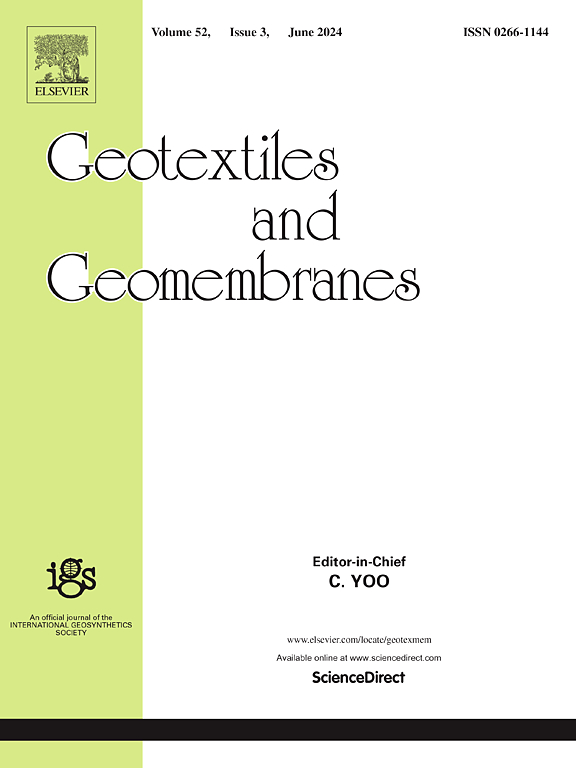Experimental study on the vacuum consolidation of recycled fibre-improved soft soils assisted with prefabricated vertical drain
IF 6.2
1区 工程技术
Q1 ENGINEERING, GEOLOGICAL
引用次数: 0
Abstract
Billions of face masks were discarded daily, causing severe environmental concerns. Recycling waste face masks presents a significant challenge. Meanwhile, the traditional vacuum preloading shows limitations on the performance on soft soil ground. This paper investigates the potential benefits of reusing Face-Mask Fibres (FMF) as an admixture to enhance the treatment effects of vacuum preloading on soft soils. The performance of an environmentally biodegradable type of Prefabricated Vertical Drain (PVD) is also compared with that of conventional PVD through a series of laboratory physical model tests. The settlement, distributions of vacuum pressure, porewater pressure, and water content were monitored. In addition, after vacuum preloading, the undrained shear strength of treated soil was determined. Scanning electron microscope tests were also carried out to analyse the microscopic structure of treated soil. Results reveal that face-mask fibres significantly improved the performances of vacuum preloading in terms of vacuum dewatering and strengthening. Furthermore, the rate of vacuum consolidation was accelerated due to the additional drainage channels provided by recycled face-mask fibres. Notably, the final water content of the treated soil decreased to 41.8%, which is markedly lower than the liquid limit of 63.9%. The undrained shear strength exhibited considerable improvement, nearly doubling in value. The mechanism of how FMF works was also discussed.
预制竖向排水辅助下再生纤维改良软土真空固结试验研究
每天有数十亿个口罩被丢弃,造成了严重的环境问题。回收废弃口罩是一项重大挑战。同时,传统的真空预压在软土地基上表现出一定的局限性。研究了面罩纤维(FMF)作为增强真空预压处理软土效果的复合材料的潜在效益。通过一系列的实验室物理模型试验,比较了环境可生物降解型预制垂直排水管(PVD)与常规预制垂直排水管的性能。监测了沉降、真空压力、孔隙水压力和含水率的分布。此外,对真空预压后处理土的不排水抗剪强度进行了测定。利用扫描电镜对处理后土壤的微观结构进行了分析。结果表明,面罩纤维在真空脱水和强化方面显著改善了真空预压的性能。此外,由于回收的面罩纤维提供了额外的排水通道,真空固结的速度加快了。处理后土壤的最终含水量降至41.8%,明显低于液限63.9%。不排水抗剪强度有明显提高,几乎增加了一倍。讨论了FMF的作用机理。
本文章由计算机程序翻译,如有差异,请以英文原文为准。
求助全文
约1分钟内获得全文
求助全文
来源期刊

Geotextiles and Geomembranes
地学-地球科学综合
CiteScore
9.50
自引率
21.20%
发文量
111
审稿时长
59 days
期刊介绍:
The range of products and their applications has expanded rapidly over the last decade with geotextiles and geomembranes being specified world wide. This rapid growth is paralleled by a virtual explosion of technology. Current reference books and even manufacturers' sponsored publications tend to date very quickly and the need for a vehicle to bring together and discuss the growing body of technology now available has become evident.
Geotextiles and Geomembranes fills this need and provides a forum for the dissemination of information amongst research workers, designers, users and manufacturers. By providing a growing fund of information the journal increases general awareness, prompts further research and assists in the establishment of international codes and regulations.
 求助内容:
求助内容: 应助结果提醒方式:
应助结果提醒方式:


